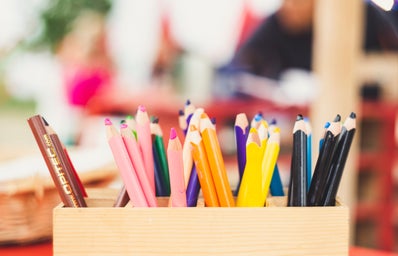I didn’t initially work in a kindergarten classroom with the hope that it would make me a better person—I honestly didn’t think much of the job beyond getting experience before starting a credential program. Over the past year and a half, however, my intentions have shifted from mere experience to what these five and six-year-olds with such big hearts can teach me.
It was a bit of a shock to first realize how much power I had as an adult in a kindergarten classroom. Young kids, but especially kindergarteners, are so moldable that it’s almost scary. I felt uncomfortable mediating conflict between them, knowing that whatever moral I teach them informs their future actions and perspectives of the world. I will be the first to admit that the first time I had to settle a conflict between two young ones, I could’ve done a lot better; I could’ve been quicker on my feet, I could’ve made sure they were listening, I could’ve engaged social-emotional learning and taught them empathy… I could have done a lot. However, even if my kindergarteners may not have learned anything from me at that moment, I certainly learned lessons about what kids respond to and why that I continue to use in my teaching today.
Another shock was revisiting the kindergarten curriculum. The kids learned the alphabet, they learned to count, and they learned colors and shapes. While this curriculum might sound obvious—what kid doesn’t learn the alphabet in kindergarten?—it’s a completely different story trying to teach students all these skills. How do you communicate with a kid that the number 11 comes after 10? That “bed” is spelled with an “e” and not “i”? To me and you, it’s obvious. To them, it’s an obstacle they must overcome. Recognizing that everything I know is something I learned, and not something pre-programmed into me, helped me recall my own kindergarten frustrations and ultimately be more patient with the students.
One of the most important practices to implement, in my opinion, is meeting the kids where they’re at. Like with counting and spelling, you can’t expect kids to just figure it out on their own. Using strategies to scaffold their learning—counting alongside them, sounding out words together—shows them that you’re learning too, and they don’t have anything to be afraid of. This requires letting go of any sense of ego you might have. If you have to sing a silly song to help them get their answer, you get over yourself and sing the silly song with a smile. I certainly still face troubles with this, like when I tell a student a fact and they begin an endless loop of “You’re wrong”; it takes patience and practice to say, Maybe this time, I can just be wrong, rather than try to prove myself to a six-year-old kid who’s just playing around.
I have learned these lessons, and countless more from my precious classes of kindergarteners. They might be annoying, they might be exhausting, and they might not ever listen to me when I need them to, but they are still the precious, curious, intelligent students who teach me how to be a better person every time I work with them.




